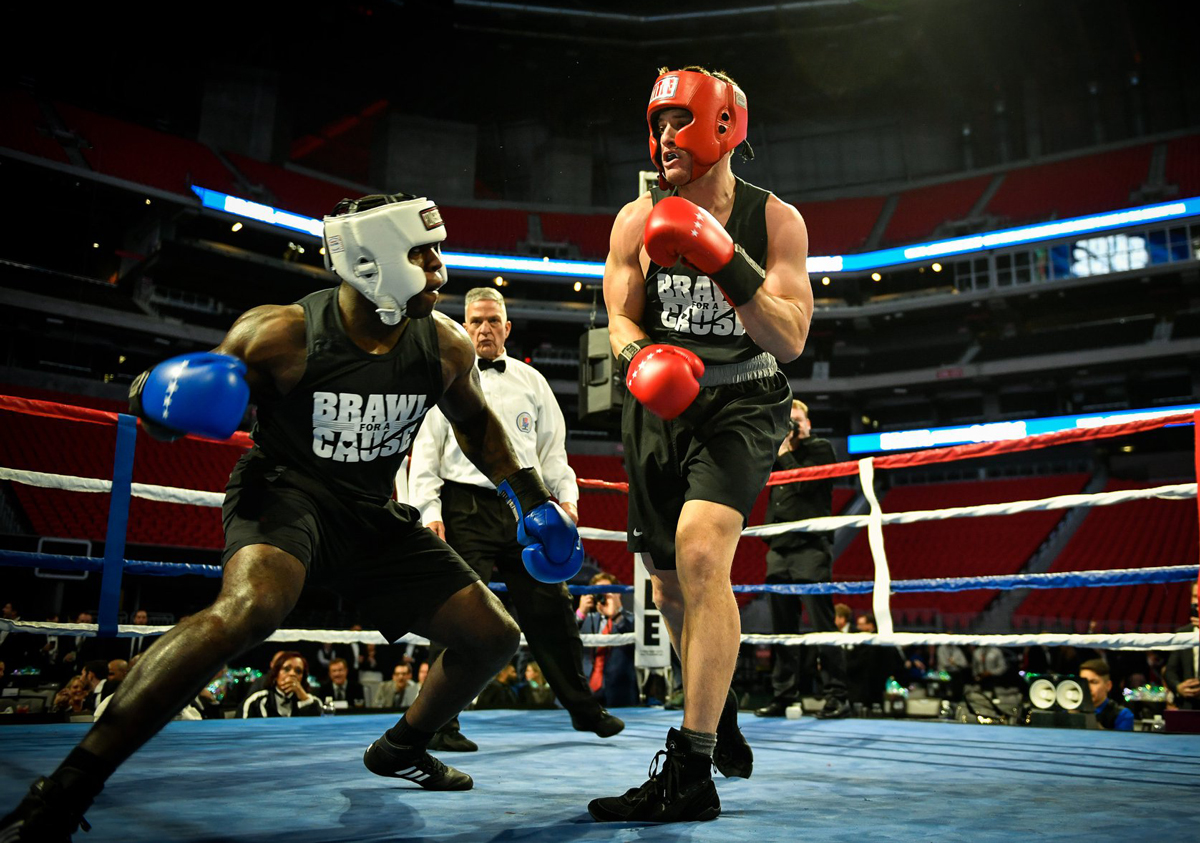Boxing, running, dead lifts—diabetes doesn’t hold this Atlanta personal trainer back
Jonathan Kolowich, who was diagnosed with type 1 diabetes at age 12, wants other diabetics to feel as empowered and powerful as he does
Jonathan Kolowich is the kind of fitness trainer whose Instagram videos make you say, “Wait, whaaaaaat?” We’re talking about moves like Turkish get-ups with a heavy barbell, or push-ups on one arm and one leg, or plyometric push-ups that jump from benches to the floor and back, or getting punched in the gut while doing abdominal exercises. And he makes it all look kind of easy. It’s not—and not just because these kinds of physical feats take practice, strength, and stamina. Every day Kolowich has to think about, monitor, and manage his blood sugar because he has diabetes. But he never lets the disease stop him from being healthy and strong. And he wants other diabetics to feel just as empowered and powerful.
Kolowich has type 1 diabetes, the kind that typically develops in children and adolescents and occurs when the immune system attacks the insulin-producing cells in the pancreas. Type 1 diabetics have to watch their glucose levels and take insulin to keep their blood sugar from going too high or too low. Type 2 diabetes tends to affect adults (though it can also affect children), and occurs when there’s perhaps enough insulin but the body can’t process it. Obesity ups the risk.
“Diabetes doesn’t have to be limiting,” Kolowich says. “You can still do everything that other people do. You just have to be conscious about it.”
Kolowich spreads this message with tips and workouts at diabetesstrength.com and recently raised more than $7,500 for the Juvenile Diabetes Research Fund at Brawl for a Cause, an amateur boxing event at Mercedes-Benz Stadium. He’d never been in a bout before, but every year he takes on at least one new physical challenge. Some years it’s a running race, other years a new kind of workout. For the brawl he trained with Adam Gil, a former boxer and fellow trainer at Brad Kolowich Jr. Personal Training (owned by Jonathan’s brother), as well as at a boxing gym.
To be sure, Kolowich isn’t blasé about these physical challenges; he knows he must be vigilant about what he eats and how he trains. That’s been true since he was 12 years old. That year he lost 20 pounds over a two-week period. When his mother took him to the doctor, the diabetes diagnosis came quickly.
“My blood sugar was 1,000, and it was supposed to be 100,” he says. “They knew right then and there that it was diabetes. It was definitely the biggest life-changing moment of my life.”
He had to prick his finger six to 10 times a day and give himself shots of insulin to stay even-keeled while he played baseball, basketball, and tennis. “Exercise can knock down your blood sugar,” he says. “That was tough. I always had to have sugar on hand in case of emergency. When it would go low, it was really scary. I once fainted on the baseball field. And when I was 16, driving home from practice, I passed out. Thankfully no one was hurt.”
When he went on to play baseball in college, on scholarship at Georgia State University, Kolowich would carry a candy bar in his back pocket, keep juice in the dugout, and check his blood sugar frequently on game day.
Now, as a personal trainer, he doesn’t use candy to keep himself stable. He tries to eat clean about 90 percent of the time, and if his blood sugar drops he’ll take glucose tabs or eat a banana or pineapple. For a while Kolowich used an insulin pump and monitor to keep his numbers in check, and that allowed him to live a very normal life. But the equipment wouldn’t work for boxing—he would too often get punched in the stomach, the site of the port and tubing for his pump. So for several months he was back to pricking his fingers and giving himself injections, and carefully managing his numbers.
“If my blood sugar is off, my reaction times can be slower, and in boxing, reaction is everything, so I had to be really careful,” he says. “I was being super aware.”
He trained hard, doing squats, hang cleans, push presses, rows, and at least 45 minutes a day of boxing with Gil or shadowboxing. For his diet, Kolowich ate a lot of meat, vegetables, and low-glycemic fruits like berries. To drink, he stuck with water and iced coffee. His numbers stayed mostly stable, and on the day of the fight, he checked them every 30 minutes to make sure they remained so. Gil, who served as one of the corner men during the fight, held on to a juicebox for Kolowich, just in case.
His blood sugar remained stable, and he went on to win the fight. “I crashed about an hour after the fight,” Kolowich says. “In boxing, even six minutes feels like an hour. I was definitely smoked and tired. But it was so worth it. It was fun to be part of that event. It wasn’t just about getting in the ring and killing each other. It was getting in the ring for a cause that’s close to my heart.”
Article adapted from: Atlanta Magazine, Christine Van Dusen

